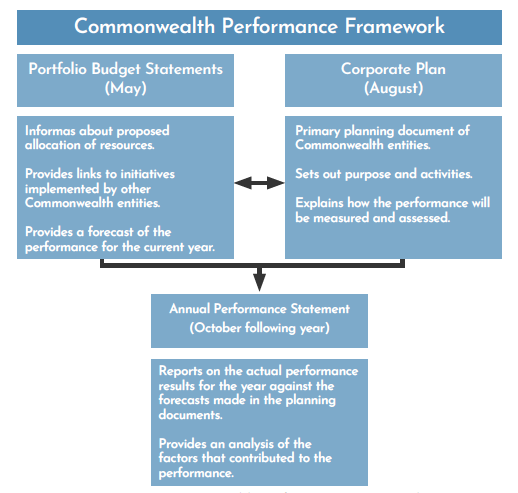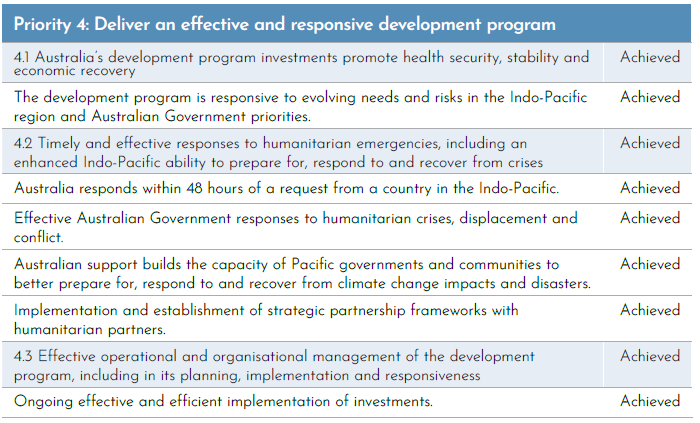Is Transparent Governance Truly the Key to Better Public Sector Performance?

Image Source: Freepik
Transparency is a fundamental principle in the public sector, characterized by openness, communication, and responsiveness. It demands that public institutions disclose their activities and decisions to citizens, directly impacting their accountability and contributing to improved public administration performance.
In The KPI Institute’s Government Services Index (GSI) 2023 report—a comprehensive compilation of indicators designed to evaluate government service performance based on five key dimensions: Future Readiness, Digitalization, Governance, Society Welfare, and Citizen Experience—the transparency of governments worldwide was assessed within the Governance dimension. According to the findings, Australia holds the ninth position in the Governance dimension and placed sixth in Transparency. A key factor contributing to these rankings is the Commonwealth Performance Framework (CPF), which serves as a central component in the Australian government’s commitment to transparency and accountability.
The Framework for Transparency in Australia’s Public Sector
The CPF is a performance measurement system established by the Australian government to evaluate the government bodies subject to the Public Governance, Performance, and Accountability Act 2013. The framework (see Figure 1) offers a structured approach for planning, measuring, and reporting on the efficiency of public initiatives and operations.
Strategic Planning: Government bodies must formulate corporate plans, outlining their objectives, strategies, and anticipated outcomes. Additionally, the Portfolio Budget Statements aids in resource management, detailing the allocation of resources to government outcomes and programs.
Performance measures embedded within these plans must align with the entity’s purposes or critical activities. These measures should be reliable, verifiable, and unbiased when assessing the entity’s performance. They ideally encompass a mix of qualitative and quantitative indicators, including measures of outputs, efficiency, and effectiveness. Moreover, they should facilitate longitudinal assessments of performance over time.

Figure 1. Commonwealth Performance Framework | Source: Adapted from the Australian Government, Department of Finance
For example, the Department of Foreign Affairs and Trade’s 2022–23 Corporate Plan provides an overview of the entity’s performance information. The department’s transparency is evident in its clear outline of priorities and objectives, providing a transparent view of planned actions. This transparency is strengthened by the inclusion of delivery targets and various data collection methods. Moreover, regular performance assessments, conducted internally and externally using diverse data sources, further enhance transparency by offering a reliable basis for evaluating the department’s progress.
Additionally, the Department of Foreign Affairs and Trade’s Portfolio Budget Statement 2022-23 reveals the budgeted expenses for the programs specified in the Corporate Plan. The transparent nature of these documents benefits various stakeholders. Senators and Members of Parliament gain insights into the proposed allocation of resources, while the public gains an understanding of the government’s focus. Businesses also receive clarity on trade and investment priorities, and partner countries find opportunities for collaboration. Furthermore, the commitment to incorporating indigenous perspectives into Australia’s international diplomacy is showcased, fostering inclusivity.
Read More >> Transforming Performance Measurement Practices in MENA for Agility and Innovation
Performance Measurement: Measuring performance under the CPF involves developing performance information that allows stakeholders to assess how an entity’s activities support the achievement of its purposes. Performance measures, outlined in the planning documents and spanning at least four reporting periods, provide an extended base for evaluation.
Actual performance results are published annually in Annual Reports. These reports include Annual Performance Statements that assess and analyze the entity’s performance for the reporting period. They detail the entity’s achievement of its objectives against specified targets and provide an analysis of factors influencing performance. This analysis encompasses changes to the entity’s purposes, activities, organizational capabilities, and external environment.
To round out the example, here’s a snippet from the department’s Annual Performance Statement, highlighting the performance results for the fourth priority of Outcome 1 (see Figure 2), as outlined in the Corporate Plan.

Figure 2. Summary of performance results | Adapted from: Australian Government – Department of Foreign Affairs and Trade Annual Report 2022-23
Out of the seven priorities, Priority 4: Deliver an effective and responsive development program stands out as it is the only one that, by far, was able to achieve its goal. Through it, Australia’s development program that promotes health security, stability, and economic recovery became responsive. Moreover, it facilitated timely and effective government responses to humanitarian crises.
Transparent Reporting: Government bodies are required to report on actual results achieved against performance measures outlined in planning documents. These reports include audited financial statements, non-financial performance information, and other pertinent reporting details.
Subsequently, responsible ministers table these reports in parliament for thorough scrutiny and accountability. Following their tabling, these reports are made publicly accessible on the Transparency Portal, the central repository and data store of publicly available corporate planning and reporting information, enhancing transparency and accountability in government operations.
Read More >> How to Sustain a Performance Culture That Drives Growth and Innovation
Australia’s success in transparency, as demonstrated through the CPF and reflected in the GSI 2023 rankings, positions the country as an exemplary model of best practice. It showcases Australia’s proactive stance in fostering public trust, informed decision-making, and continuous improvement.
Sustaining and strengthening transparency efforts will foster trust between governments and citizens, drive positive change, and achieve sustainable development goals. By upholding the principle of transparency, governments can build resilient, responsive, and accountable institutions that serve the needs of all citizens.
**********
Editor’s Note: This was originally published in Performance Magazine Issue No. 30, 2024 – Government Edition.

